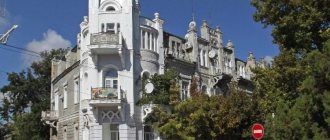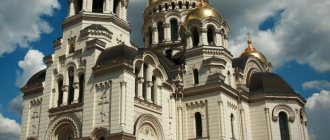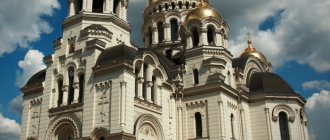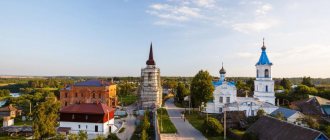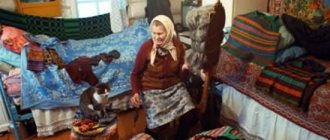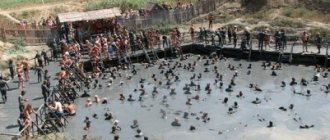This city, located in the vast Orenburg , is usually associated with two episodes of his life - the arrival here of the rebellious army of Emelyan Pugachev and the short stay of Alexander Sergeevich Pushkin . Events that are significant for a provincial town and deserve great attention, but not the only ones.
Photographer: Sergey Suvorov
Over its almost three-century existence, Sorochinsk has experienced many events that deserve attention and respect for its residents. There were many sad moments in his history, but there were no less reasons for joy. The joy of creation, the joy of victories in one’s small homeland and common, nationwide victories.
City in the distant steppe
Like most eighteenth-century cities that emerged on these lands, Sorochinsk was built as a fortress. Later, it went beyond its borders and began to grow with the dwellings of peaceful workers, who gradually developed the lands surrounding the fortress and were engaged in handicraft production.
Photographer: Sergey Suvorov
The impetus for the construction of first the fortress, and later the city, was the famous expedition of I.K. Kirilov. In 1736, among the three fortresses of the Samara distance, a defensive structure was laid in Sorochinsk.
Until November 1773, the life of people in the Sorochinsky fortress did not differ from how the inhabitants of other similar structures lived in the Orenburg steppes. People served, started families, settled down. That distant autumn, the garrison of the fortress had to make a difficult decision - whether to fight the enemy, who was advancing on the city not from the home of the hordes of nomads, but from the lands that the garrison was obliged to defend.
Sorochinsk surrendered to the Gugachev army without a fight, coming out to meet him under the ringing of bells with a white flag. This event was preceded by propaganda work carried out by Cossack Timofey Chernov and retired sergeant Pyotr Babaev. There is an assumption that it was these people who persuaded the soldiers to go over to the side of the rebels.
The loyalty of the Sorochintsy to Pugachev’s army did not save the fortress from destruction. Retreating, he ordered it to be burned. The fortress was restored after the defeat of the rebels. And it existed until the need for defensive lines disappeared. Then it was decided to abolish it.
Sorochinskaya fortress and the Pugachev uprising
By the time of the Pugachev uprising, the Sorochin fortress had 128 households with 745 inhabitants. The first reconnaissance detachment of the rebels appeared here in the second half of October 1773. The Sorochinsky garrison not only did not offer any resistance to the Pugachevites, but also joined them. From November 17, the fortress was under complete control of the rebels and remained in their hands for about four months.
From the beginning of January 1774, military operations began to shift east of Samara. The corps of General P.M. was moving towards besieged Orenburg from the Buguruslan settlement. Golitsyn, and along the Samara distance the brigade of General P.D. launched an offensive. Mansurova. Pugachev, led by a detachment of 1,500 people, arrived at the Sorochinsky fortress to give battle to General Golitsyn. On March 5, the vanguard team of the imperial troops under the command of Major V. Elagin entered the village of Pronkino and settled down here for the night. On the morning of March 6, the soldiers were suddenly attacked by rebels led by Pugachev. General P.M. Golitsyn wrote about this battle in his journal: “Major Elagin, being in the village of Pronkina with an advanced detachment [a separate detachment], which included more than 500 infantry and cavalry people, 4 guns, in the very darkness of the night and during a strong snowstorm, was forced to withstand unexpected attack, he immediately established order here and was ready for defense, but was killed during the first attack.” The battle lasted more than three hours. Pugachev's attack was repulsed, and he retreated to the Sorochin fortress. To impede the advance of government troops, Pugachev burned the Sorochinskaya fortress on March 7, 1774 and retreated to Tatishcheva. It took many years to restore the fortress to its previous form. But due to changes in Russia’s borders, it no longer had the same significance.
After the suppression of the Pugachev uprising, life on the Samara line of fortresses returned to its previous course. In addition to the Cossacks, Kalmyks of the irregular Stavropol army carried out cordon service at the Samara distance. Lands (“koshes” and “uluses”) were allocated for them in the area between the Samara and Greater Uranus rivers. And around the Sorochinskaya fortress, settlements began to arise that still exist in the area, founded by settlers from the central Russian provinces - Tambov, Kursk, Penza and Ryazan.
In 1781, by decree of Catherine II, the Buzuluk district was formed, which included the territory of the Sorochinsky district until 1928. In 1798, a cantonal system of government was introduced in the Orenburg province for the military service population. In this regard, the Sorochinskaya fortress was transformed into a village of the Orenburg Cossack army, and from the middle of the 19th century it acquired the status of a village.
Finding itself in the thick of the Pugachev uprising, Sorochinsk attracted those interested in these events. Thus, collecting materials for writing the story “The Captain’s Daughter” and “The History of the Pugachev Rebellion”, A.S. Pushkin, accompanied by V.I. Dalya, on the way from Samara to Orenburg on September 17, 1833, stopped at the Sorochinsky fortress at the Yamskaya station, which was located on the site of the current building of the regional financial department. The poet-historian stayed here for only a few hours, recording the stories of old-timers - eyewitnesses of the events of the Pugachev movement in the area. He received interesting information from the 86-year-old Cossack Ivan Larionovich Popkov (in Pushkin’s recording he is called “Papkov”). Pushkin recorded memories of the rebellious Yaik Cossacks - participants in the uprising of 1772 and how Popkov I.L. was a guide in the campaign of Golitsyn’s corps from the Buguruslan settlement to the Sorochin fortress in early March 1774. This material was later used by the author in his works.
Occupying a convenient geographical position, Sorochinsk becomes one of the strongholds in the trade of the center of the country with the countries of Asia. The tract passing through it, laid by merchant caravans along the fortresses and going to the city of Samara and further to the west of the country, received the name Moskovsky. Salt, fish, honey and wax, bread and livestock, furs went through it to the south, and from the south - cotton and silk fabrics, ready-made clothes, Bukhara merlushka, cloth, gold, silver.
Large bazaars and fairs were held on the village grain square (now the Rus cafe). Bukhara, Khiva, Tashkent, and Afghan merchants took part in them. The Kazakhs brought livestock for sale. Factory and plant industrialists exhibited fabrics, tanned leather, shoes, paints, metal products, dishes and jewelry, and sugar in trade rows. Residents of Sorochisk and surrounding villages sold bread, meat and dairy products.
It happened that the bazaars did not fit on Khlebnaya Square, they occupied Nevskaya Street (modern Leninskaya Street), Dvoryanskaya (K. Marx Street), Troitskaya (Internationalnaya Street) and even Shatskaya (Moskovskaya Street).
In 1876, the Samara-Orenburg Railway was built and Sorochinsk became a station. Train traffic began in January 1877. One of the first passengers to travel along it and visit Sorochinsk land was L.N. Tolstoy. Already 20 years later, through Art. Sorochinskaya sent 4,250 thousand pounds of various cargoes, mainly bread, per year. The regional historical folk museum houses a bell that hung at the entrance to the station building and notified passengers about the arrival and departure of trains, as well as lanterns that illuminated the platform and station tracks. From 1874 to 1877, a station building, barracks (barracks) for the accommodation of railway workers, a pumping station and a water tower, a rest building for train crews, and a bathhouse were built and put into operation. To supply water to this large farm, a wooden water pipeline was laid, the route of which ran along the street. Volodarsky. And the steam pump was installed on the shore of Samara. Then the water supply was installed along the street. Nevsky. This water supply system is still in operation today. The last dispenser for refueling steam locomotives with water was dismantled in 1999.
In connection with the construction of the railway, the village received the opportunity to attract capital for development. In 1870, construction began on the first buildings, such as the Agency of the Trade Industrial Commercial Bank, the Siberian Bank, the Trading House “Heirs of Commerce I.V. Alexandrov”, Sokolov Trading House, etc. The village of Sorochinskoye has turned into a large commercial and industrial center with a population of more than 5 thousand people. There were two churches, two schools, a volost government, a hospital, up to 40 trading establishments, a postal and telegraph office, a large steam mill, and the Korshunov meat-packing factory. During World War I, this factory fulfilled a government order to supply the army. In 1914, about twenty tons of sausages and hams were produced here every day. Sorochinsk products were supplied to the best metropolitan restaurants and houses of noble nobles, right up to the imperial court. It had its own trademark, but the main advantage was that it could not be counterfeited.
The first Sorochin school was wooden and built in 1877 (now it houses the military registration and enlistment office). Following it, another educational institution was erected - a two-story elementary school on the corner of today's Karl Marx and Lenin streets, but it has not survived. At the beginning of the 20th century, a two-story brick “ministerial” school was built (now here is the main building of school No. 2) and another school was built in the year of the tercentenary of the Romanov dynasty (now it houses the Center for Children's Technical Creativity). An educational institution for Muslim children, a madrasah, was opened at the mosque. At the Church of the Archangel Michael there was a mixed two-year four-year church and parish school, which began operating in 1891, and a second-class church and parish men's school.
At the end of the 19th and beginning of the 20th centuries, active construction of churches was underway in Sorochinsk. The five-domed Kazan-Virgin Church was erected. Funds for its construction were donated by eminent merchants of the village - the Mikhalevs, Isakovskys, Ignatovs, the manufacturer Korshunov and others. But after the establishment of Soviet power, the church was destroyed, and in this place there was a city stage. Now there is a memorial cross installed here in 2009.
Built in 1852, the wooden church in the name of Michael the Archangel burned repeatedly, and it was decided to build a stone church in its place. On May 25, 1901, a three-altar cathedral church was founded in the village in honor of the Archangel Michael of God on the site of a previously existing church. Its consecration took place in 1911. It was erected under the tutelage of the merchant Lavrenty Snikin. This temple of ecclesiastical affairs was built by craftsmen drawn from different cities of Russia. The interior was painted by St. Petersburg and Moscow artists. Under Soviet rule, residents' access to the church was closed, property was confiscated, the Oktyabr cinema was opened in the building, and subsequently the city House of Culture. Currently, on the initiative of city residents with the financial support of the city administration and patrons of the arts, the Church of the Archangel Michael has been restored.
The railway as the main source of change
In 1876, a railway track was laid along the coast of Samara . A station was built in Sorochinsk. With its opening, agriculture and trade received significant development. Spring, summer and autumn fairs were organized. At this time, the construction of industrial enterprises for processing agricultural raw materials began here. Mills, slaughterhouses, and fat factories were built. People got jobs in the city. The qualitative composition of the population began to change. The number of representatives of the proletariat grew. The number of residents increased to five and a half thousand.
Photographer: Sergey Suvorov
Famous people
| : Incorrect or missing image | This section is missing references to information sources. Information must be verifiable, otherwise it may be questioned and deleted. You may edit this article to include links to authoritative sources. This mark is set October 24, 2015 . |
K:Wikipedia:Articles without sources (type: not specified)
- Akimov, Ivan Alekseevich - Hero of the Soviet Union (10/26/1943), colonel.
- Osokina Antonina Pavlovna - Hero of Socialist Labor (05/20/1926)
- Yakoventsev Anatoly Aleksandrovich (06/11/1937 - 09/24/2014) - Hero of Socialist Labor of the USSR, Commander of the An-2 aircraft of the Lipetsk United Aviation Detachment of the Civil Aviation Administration of the central regions of the USSR Ministry of Civil Aviation. Date of award: 02/04/1983
Revolutions and wars did not pass by
The residents of Sorochinsk decided to support the power of the Soviets at a meeting on January 27, 1918. At the same time they elected a volost Council of Workers', Soldiers' and Peasants' Deputies numbering twenty-five people. However, soon the White Cossacks captured seven activists and brutally killed them.
Photographer: Sergey Suvorov
In the fall of 1918, the city was liberated by units of the Red Army. The headquarters of the First Revolutionary Army was located in Sorochinsk. The famous military leader Mikhail Tukhachevsky worked there, and Mikhail Frunze also came here. Vasily Chapaev and Dmitry Furmanov visited here.
Photographer: Sergey Suvorov
On May 1, 1919, the youth of Sorochinsk created the first Komsomol cell. In August of the same year, the first regional party conference took place in Sorochinsk. Alexey Rolf was elected first secretary of the district committee. In September, a prominent figure of the Communist Party and state, Mikhail Kalinin, came here. People called him the All-Union Headman.
Soon after the complete establishment of Soviet power, industry focused on processing agricultural products received new development. One of the first meat processing plants, dairy and mill plants in the region is being created in Sorochinsk. The process of collectivization of the economy is taking place.
During the Great Patriotic War, Sorochintsy fought along with other Soviet people and fearlessly defeated the enemy on their land and beyond. Many gave their lives for peace and freedom of their homeland. In their ranks are two Heroes of the Soviet Union - pilot Alexey Loshkov and guard Major Ivan Akimov.
Geography
The city is located in the Urals, on the left bank of the Samara River (a tributary of the Volga), 170 km northwest of Orenburg and 250 km southeast of the city of Samara. The Sorochinskoye Reservoir is located near the city.
Climate
The climate of Sorochinsk is sharply continental[6]. Summer is hot and dry: five months of the year the average daily temperature exceeds 15 °C; Winters are moderately cold, with maximum snow cover observed in February (23 cm). The number of clear, cloudy and cloudy days per year is 157, 176 and 32, respectively. Temperatures fluctuate greatly depending on the time of day and wind direction. In summer, temperatures can rise to 40 °C, or drop to 5 °C. Autumn comes early, and it happens around the second half of September, and winter comes around the beginning of November. Spring arrives by the end of March, but in spring the weather is unstable, and even at the end of May the cold weather may return. In winter, the weather ranges from slight frosts to severe colds, with occasional mild thaws or severe cold down to −40 °C.
Average annual climatic indicators of Sorochinsk:
- average annual temperature - +5.3 °C,
- Average annual wind speed - 3.9 m/s,
- Average annual air humidity is 68%.
| Climate of Sorochinsk | |||||||||||||
| Index | Jan. | Feb. | March | Apr. | May | June | July | Aug. | Sep. | Oct. | Nov. | Dec. | Year |
| Absolute maximum | 4,7 | 5,8 | 18,9 | 31,3 | 36,5 | 39,8 | 41,6 | 40,9 | 38,0 | 27,0 | 19,2 | 8,1 | 41,6 |
| Average maximum, °C | −8 | −7,2 | −0,8 | 12,8 | 22,1 | 27,5 | 29,0 | 27,4 | 20,9 | 11,2 | 0,3 | −5,9 | 10,8 |
| Average temperature, °C | −11,8 | −11,5 | −5,2 | 6,9 | 15,2 | 20,6 | 22,3 | 20,3 | 14,0 | 5,9 | −3,2 | −9,5 | 5,3 |
| Average minimum, °C | −15,5 | −15,7 | −9,3 | 1,7 | 8,5 | 13,8 | 15,6 | 13,6 | 7,9 | 1,6 | −6,1 | −13,1 | 0,3 |
| Absolute minimum, °C | −43,2 | −40,1 | −36,8 | −26 | −5,7 | −0,7 | 4,9 | −0,9 | −5,3 | −19,8 | −35,7 | −39,2 | −43,2 |
| Precipitation rate | 29 | 22 | 25 | 28 | 30 | 36 | 41 | 29 | 26 | 34 | 33 | 31 | 364 |
| Source: [pogoda.ru.net/climate/35121.htm Weather and climate] | |||||||||||||
Timezone
Sorochinsk is located in the UTC+6 time zone, the time in which differs by +2 hours from Moscow (MSK+2), the time in Sorochinsk differs from standard time by two hours throughout the year after the abolition of the transition to summer and winter time on March 27, 2011 .
Peaceful life
received the status of the village of Sorochinskoye back in the 19th century . On June 1, 1932, the village was transformed into the working village of Sorochinsk , 1945, Sorochinsk became a city.
Photographer: Sergey Suvorov
A truly calm life came to Sorochinsk after the Great Victory. She wasn't easy. As throughout the country, people were busy transferring the economy to a peaceful path. This was not always facilitated by political decisions, but the country was rising from ruins, and the residents of Sorochinsk made a significant contribution to this process.
Through conscientious work they maintained food security. This was especially important in the first post-war years, when famine had not yet released the country’s population from its clutches.
In the early seventies of the last century, oil fields began to be developed in the vicinity of Sorochinsk. An oil and gas production department, Sorochinskneft, is being created in the city. Today there are about 650 oil wells in the urban district.
Sorochinsk is one of the ten largest cities in the Orenburg region. According to this indicator, he was in seventh place. By the standards of the entire country, Sorochinsk can be called a solid average. As of January 1, 2022, the city was in 538th place out of 1,115 cities in the country in terms of population.
Content
- 1 History 1.1 Brief history of Sorochinsk
- 1.2 Sorochinskaya fortress 1.2.1 By whom and when was the Sorochinskaya fortress founded
- 1.2.2 Historical figures who visited Sorochinsk
- 1.2.3 Events that took place in the fortress during the peasant revolt under the leadership of Emelyan Pugachev
- 1.2.4 Events that took place in the fortress during the civil war of 1918-1919
- 1.2.5 History of Sorochinsky station
- 2.1 Climate
- 7.1 Cellular 7.1.1 Television
Come! You will not regret!
Sorochinsk, which has preserved its history and at the same time looked to the future, has every opportunity for further development.
It is also interesting for tourists. A wonderful local history museum. Preserved unique buildings. Monuments and memorials, including one of the most famous - a monument to the work of Alexander Sergeevich Pushkin “The Captain's Daughter”.
Photographer: Sergey Suvorov
And also amazingly beautiful nature. The banks of the reservoir with an abundance of fish. Steppe spaces. Forbs and colors. All this is worth seeing with your own eyes...
Sources: https://www.liveinternet.ru/community/2408602/post70025378/
https://must-see.top/
Education
- Department of Education of the City Administration of Sorochinsk, Website of the Department of Education of the City Administration of Sorochinsk
- .
Educational institutions
- Municipal educational institution "Secondary school No. 1"
- Municipal educational institution "Secondary school No. 2"
- Municipal educational institution "Secondary school No. 3"
- Municipal educational institution "Secondary school No. 4"
- Municipal educational institution "Secondary school No. 7"
- Municipal educational institution "Secondary school No. 117"
- Children's and youth sports school
- Center for Children's Technical Creativity
- Station for young naturalists
https://www.56ouo10.ru
Websites of educational institutions in the city of Sorochinsk
Temple of the Archangel Michael
In 1907, the Church of the Archangel Michael was erected in the village of Sorochinskoye. The church was built by architects from different cities of Russia. The best artists from St. Petersburg and Moscow were gathered for painting. Unfortunately, the temple lasted only seven years. With the arrival of the Soviet government, the temple was closed and then looted. For some time, the church building was used as a cinema. In 1991 the temple resumed activity.
Location: Lenin street - 27.
Excerpt characterizing Sorochinsk
The Countess was prepared by hints from Anna Mikhailovna during dinner. Having gone to her room, she, sitting on an armchair, did not take her eyes off the miniature portrait of her son embedded in the snuffbox, and tears welled up in her eyes. Anna Mikhailovna, with the letter, tiptoed up to the countess's room and stopped. “Don’t come in,” she said to the old count who was following her, “later,” and closed the door behind her. The Count put his ear to the lock and began to listen. At first he heard the sounds of indifferent speeches, then one sound of Anna Mikhailovna's voice, making a long speech, then a cry, then silence, then again both voices spoke together with joyful intonations, and then steps, and Anna Mikhailovna opened the door for him. On Anna Mikhailovna's face was the proud expression of an operator who had completed a difficult amputation and was introducing the audience so that they could appreciate his art. - C'est fait! [The job is done!] - she said to the count, pointing with a solemn gesture at the countess, who was holding a snuffbox with a portrait in one hand, a letter in the other, and pressed her lips to one or the other. Seeing the count, she stretched out her arms to him, hugged his bald head and through the bald head again looked at the letter and portrait and again, in order to press them to her lips, she slightly pushed the bald head away. Vera, Natasha, Sonya and Petya entered the room and the reading began. The letter briefly described the campaign and two battles in which Nikolushka participated, promotion to officer, and said that he kisses the hands of maman and papa, asking for their blessing, and kisses Vera, Natasha, Petya. In addition, he bows to Mr. Sheling, and Mr. Shos and the nanny, and, in addition, asks to kiss dear Sonya, whom he still loves and about whom he still remembers. Hearing this, Sonya blushed so that tears came to her eyes. And, unable to withstand the glances directed at her, she ran into the hall, ran up, spun around and, inflating her dress with a balloon, flushed and smiling, sat down on the floor. The Countess was crying. -What are you crying about, maman? - Vera said. “We should rejoice at everything he writes, not cry.” This was completely fair, but the count, the countess, and Natasha all looked at her reproachfully. “And who did she look like!” thought the Countess. Nikolushka's letter was read hundreds of times, and those who were considered worthy of listening to it had to come to the countess, who would not let him out of her hands. Tutors, nannies, Mitenka, and some acquaintances came, and the countess re-read the letter every time with new pleasure and each time, from this letter, she discovered new virtues in her Nikolushka. How strange, extraordinary, and joyful it was for her that her son was the son who had barely noticeably moved with tiny limbs inside her 20 years ago, the son for whom she had quarreled with the pampered count, the son who had learned to say before: “ pear,” and then “woman,” that this son is now there, in a foreign land, in a foreign environment, a courageous warrior, alone, without help or guidance, doing some kind of manly work there. All the world's centuries-old experience, indicating that children imperceptibly from the cradle become husbands, did not exist for the countess. The maturation of her son in every season of manhood was as extraordinary for her as if there had never been millions of millions of people who matured in exactly the same way. Just as she couldn’t believe 20 years ago that that little creature that lived somewhere under her heart would scream and begin to suck her breast and start talking, so now she couldn’t believe that this same creature could be that strong, a brave man, an example of the sons and men he was now, judging by this letter. - What a calm, how cute he describes! - she said, reading the descriptive part of the letter. - And what a soul! Nothing about myself... nothing! About some Denisov, and he himself is probably braver than them all. He writes nothing about his suffering. What a heart! How do I recognize him! And how I remembered everyone! I haven't forgotten anyone. I always, always said, even when he was like this, I always said... For more than a week they prepared, wrote brouillons and wrote out letters to Nikolushka from the whole house; under the supervision of the countess and the care of the count, the necessary items and money were collected to outfit and equip the newly promoted officer. Anna Mikhailovna, a practical woman, managed to arrange protection for herself and her son in the army, even for correspondence. She had occasion to send her letters to Grand Duke Konstantin Pavlovich, who commanded the guard. The Rostovs assumed that the Russian guard abroad had a completely definite address, and that if the letter reached the Grand Duke, who commanded the guard, then there was no reason why it should not reach the Pavlograd regiment, which should be nearby; and therefore it was decided to send letters and money through the Grand Duke’s courier to Boris, and Boris should have already delivered them to Nikolushka. The letters were from the old count, from the countess, from Petya, from Vera, from Natasha, from Sonya and, finally, 6,000 money for uniforms and various things that the count sent to his son. On November 12, the Kutuzov military army, camped near Olmutz, was preparing for the next day to review the two emperors - Russian and Austrian. The guard, which had just arrived from Russia, spent the night 15 versts from Olmutz and the next day, right for the review, at 10 o’clock in the morning, entered the Olmutz field. On this day, Nikolai Rostov received a note from Boris informing him that the Izmailovsky regiment was spending the night 15 miles short of Olmutz, and that he was waiting for him to give him a letter and money. Rostov especially needed money now that, having returned from the campaign, the troops stopped near Olmutz, and well-supplied sutlers and Austrian Jews, offering all kinds of temptations, filled the camp. The Pavlograd residents had feasts after feasts, celebrations of awards received for the campaign and trips to Olmutz to visit Caroline of Hungary, who had recently arrived there, who opened a tavern there with female servants. Rostov recently celebrated its production of cornets, bought Bedouin, Denisov's horse, and was in debt to his comrades and sutlers. Having received Boris's note, Rostov and his friend went to Olmutz, had lunch there, drank a bottle of wine and went alone to the guards camp to look for his childhood comrade. Rostov had not yet had time to get dressed. He was wearing a shabby cadet's jacket with a soldier's cross, the same leggings lined with worn leather, and an officer's saber with a lanyard; the horse he rode on was a Don horse, bought on a campaign from a Cossack; the hussar's crumpled cap was pulled back and to one side in a jaunty manner. Approaching the camp of the Izmailovsky regiment, he thought about how he would amaze Boris and all his fellow guardsmen with his shelled combat hussar appearance. The guard went through the entire campaign as if on a festivities, flaunting their cleanliness and discipline. The crossings were short, the backpacks were carried on carts, and the Austrian authorities prepared excellent dinners for the officers at all crossings. The regiments entered and left the cities with music, and throughout the campaign (of which the guards were proud), by order of the Grand Duke, people walked in step, and the officers walked in their places. Boris walked and stood with Berg, now the company commander, throughout the campaign. Berg, having received a company during the campaign, managed to earn the trust of his superiors with his diligence and accuracy and arranged his economic affairs very profitably; During the campaign, Boris made many acquaintances with people who could be useful to him, and through a letter of recommendation he brought from Pierre, he met Prince Andrei Bolkonsky, through whom he hoped to get a place on the headquarters of the commander-in-chief. Berg and Boris, cleanly and neatly dressed, having rested after the last day's march, sat in the clean apartment assigned to them in front of the round table and played chess. Berg held a smoking pipe between his knees. Boris, with his characteristic accuracy, placed the checkers in a pyramid with his white thin hands, waiting for Berg to make a move, and looked at his partner’s face, apparently thinking about the game, as he always thought only about what he was doing. - Well, how will you get out of this? - he said. “We’ll try,” Berg answered, touching the pawn and lowering his hand again. At this time the door opened. “Here he is, finally,” Rostov shouted. - And Berg is here! Oh, petisanfant, ale kushe dormir, [Children, go to bed,] he shouted, repeating the words of the nanny, which he and Boris had once laughed at. - Fathers! how you have changed! - Boris stood up to meet Rostov, but while getting up, he did not forget to support and put in place the falling chess and wanted to hug his friend, but Nikolai moved away from him. With that special feeling of youth, which is afraid of the beaten path, wants, without imitating others, to express its feelings in a new way, in its own way, if only not in the way the elders express it, often feignedly, Nikolai wanted to do something special when meeting with a friend : he wanted to somehow pinch, push Boris, but just not kiss him, as everyone else did. Boris, on the contrary, calmly and friendlyly hugged and kissed Rostov three times. They didn't see each other for almost six months; and at that age when young people take their first steps on the path of life, both found in each other enormous changes, completely new reflections of the societies in which they took their first steps in life. Both had changed a lot since their last date, and both wanted to quickly show each other the changes that had taken place in them. - Oh, you damn polishers! Clean, fresh, as if from a party, not that we are sinners, army people,” Rostov said with new baritone sounds in his voice and army grip, pointing to his mud-splattered leggings. The German hostess leaned out of the door at Rostov’s loud voice. - What, pretty? - he said with a wink. - Why are you shouting like that! “You’ll scare them,” Boris said. “I wasn’t expecting you today,” he added. - Yesterday, I just gave you a note through one of my acquaintances, Kutuzovsky’s adjutant - Bolkonsky. I didn’t think that he would deliver it to you so soon... Well, how are you? Already fired upon? – asked Boris. Rostov, without answering, shook the soldier’s St. George’s Cross hanging on the strings of his uniform, and, pointing to his tied hand, looked at Berg, smiling. “As you can see,” he said. - That's how it is, yes, yes! – Boris said, smiling, “and we also made a nice trip.” After all, you know, His Highness always rode with our regiment, so we had all the comforts and all the benefits. In Poland, what kind of receptions there were, what kind of dinners, balls - I can’t tell you. And the Tsarevich was very merciful to all our officers. And both friends told each other - one about their hussar revelry and military life, the other about the pleasures and benefits of serving under the command of high-ranking officials, etc. - Oh guard! - said Rostov. - Well, let’s go get some wine. Boris winced. “If you really want to,” he said. And, going up to the bed, he took out his wallet from under the clean pillows and ordered him to bring wine. “Yes, and give you the money and the letter,” he added. Rostov took the letter and, throwing the money on the sofa, leaned both hands on the table and began to read. He read a few lines and looked angrily at Berg. Having met his gaze, Rostov covered his face with the letter. “However, they sent you a fair amount of money,” said Berg, looking at the heavy wallet pressed into the sofa. “That’s how we make our way with a salary, Count.” I’ll tell you about myself... “Here’s what, my dear Berg,” said Rostov, “when you receive a letter from home and meet your man, whom you want to ask about everything, and I’ll be here, I’ll leave now so as not to disturb you. Listen, please go somewhere, somewhere... to hell! - he shouted and immediately, grabbing him by the shoulder and looking tenderly into his face, apparently trying to soften the rudeness of his words, he added: - you know, don’t be angry; my dear, my dear, I say this from the bottom of my heart, as if it were an old friend of ours. “Oh, for mercy’s sake, Count, I understand very much,” said Berg, standing up and speaking to himself in a guttural voice.
Monument to the liquidators of the consequences of the accident at the Chernobyl nuclear power plant
On April 26, 1986, an explosion occurred at the Chernobyl nuclear power plant, killing tens of thousands of people. Residents of Sorochinsk immediately responded to eliminate the consequences of the disaster. Unfortunately, most of the heroes of the Chernobyl disaster have already died, and today only 13 of them live in the city.
To honor the memory of the dead and show gratitude to the living veterans of the disaster, a memorial of eternal memory was erected through the joint efforts of the townspeople. The monument is made of black marble in the form of a flame, symbolizing the eternal memory that will never fade in the hearts of the city's residents.

